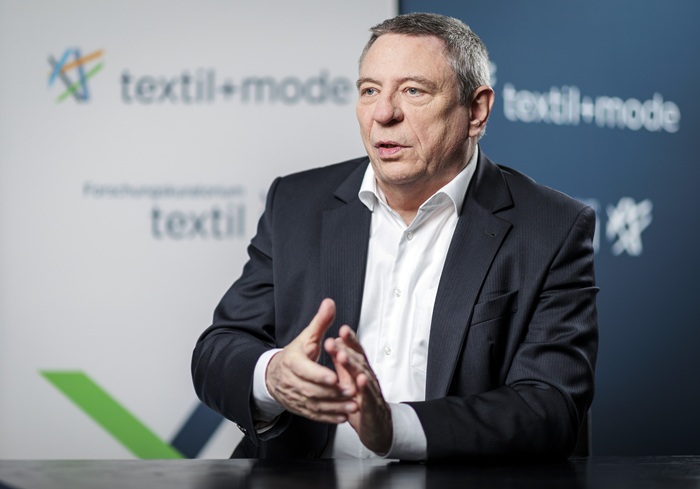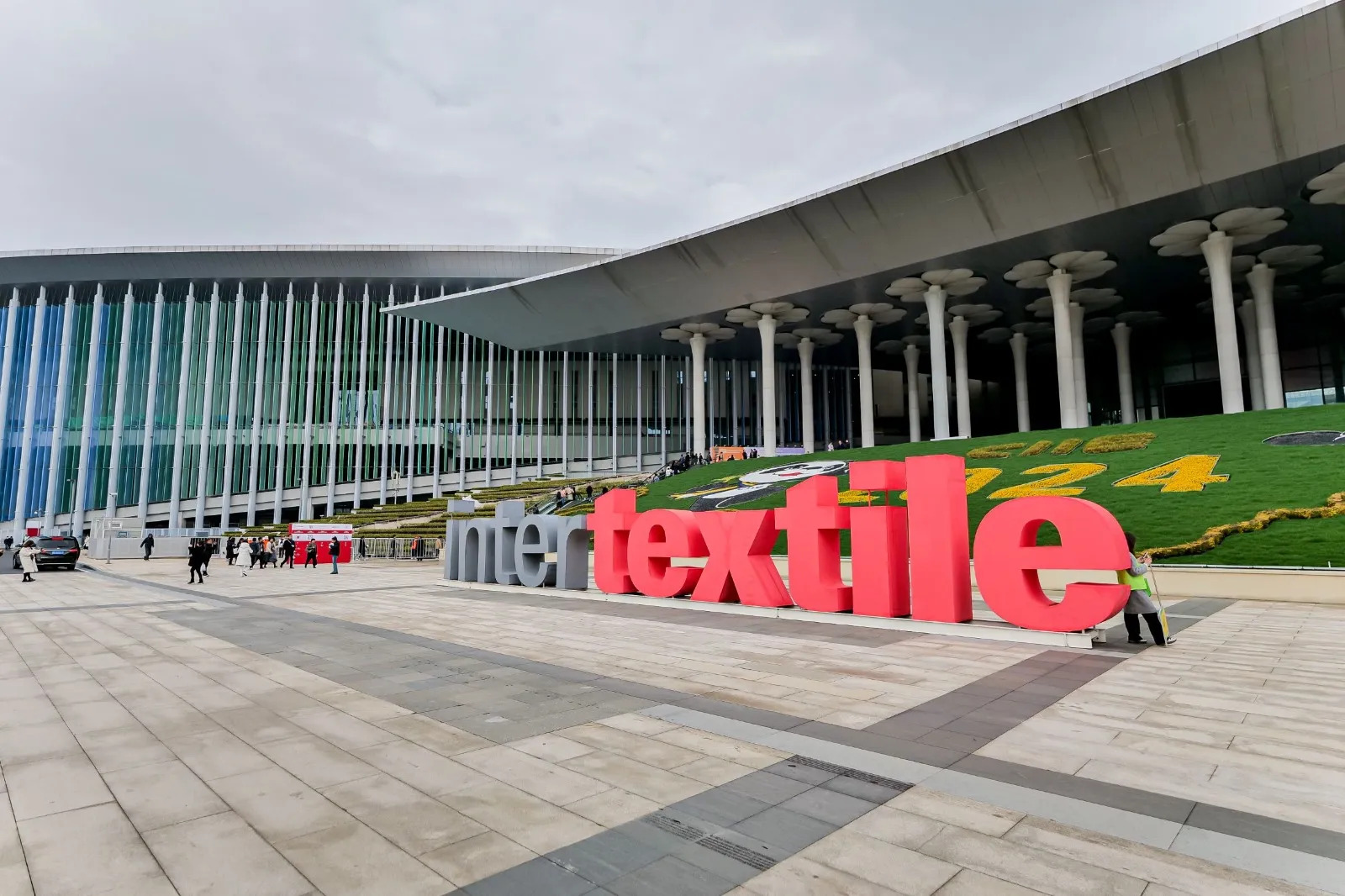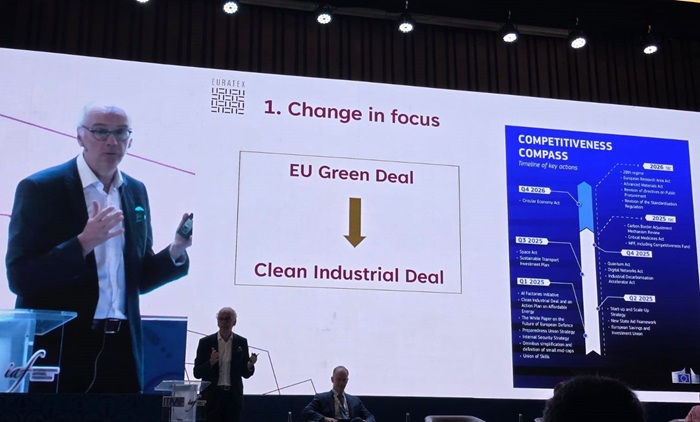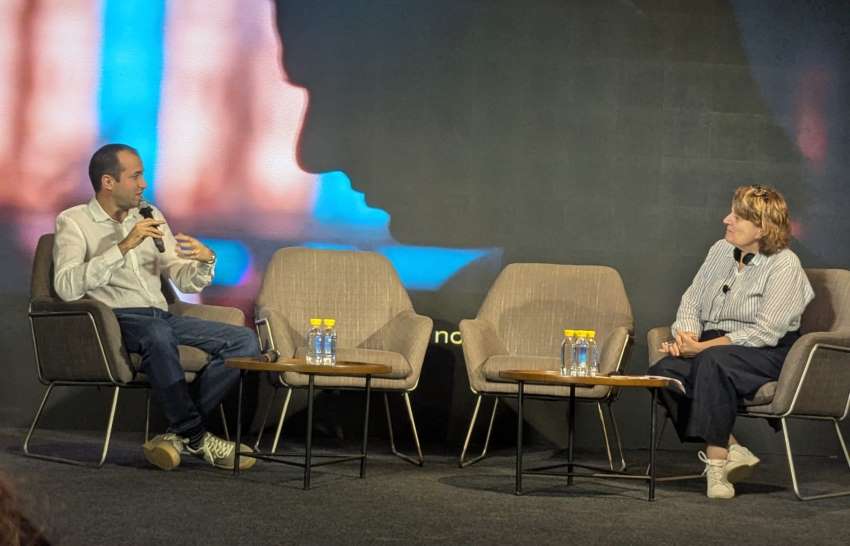FW
The Central government plans to launch hundreds of franchisees of Coir Board showrooms across India to promote use of eco-friendly coir products as a substitute for environmentally damaging plastic products. Ministry of Micro Small and Medium Enterprises will soon launch a variety of natural coir products, ranging from commonly used coir mats to special purpose coir geo textiles, popular in Europe.
Giriraj Singh, Minister of State for Ministry of Micro Small and Medium Enterprises recently visited the Coir Board headquarters for a review meeting with the board officials. He expressed concern over falling coconut production in Kerala. As the Kerala coir industry is heavily dependent on Tamil Nadu for raw materials, he urged the state government to vigorously push cultivation of coconut trees in the coastal state. The Minister also launched a new project to manufacture ‘false ceiling tiles’ from tufted coir waste promoted by the Coir Board.
He said the government wants to increase export revenue from coir products in the current financial year. India has earned Rs 1,600 crores from export of coir products last fiscal and this fiscal, it expects to generate Rs 2000 crores through foreign trade. The Coir Board will conduct 16 expos in foreign countries and 175 expos domestically to promote Indian coir products.
Coirboard.gov.in
Bangladeshi manufacturers and traders expect lower sales of popular traditional clothing lungis and saris this Eid season owing to low crop prices. Both are commonly shopped products during the festive season by people belonging to lower-income category, especially the 15.3 million farm households.
Experts point out that the sales of these items are directly linked to the condition of rural economy. When the domestic economy is positive, sales of such commonly used clothing increase. But this year, farmers have not been able to make any money due to fall in crop prices. Overall sales figures are expected to fall by 25-30 per cent this Eid against last year. Islampur in Old Dhaka and Baburhat Bazar in Narsingdi are the major wholesale markets for locally-made low-priced lungis and saris.
According to additional research director at the local think tank Centre for Policy Dialogue (CPD) Khondaker Golam Moazzem, prices of major crops have a direct impact on the farm- based rural economy and decline in prices during Boro and potato seasons has reduced the rural purchasing power.
Salon Allure has teamed up with retail visionary Babalu to create Hammock, an expansion of the Salon Allure trade show. This will have more creative exhibition spaces, previously sell-out suites and brand-new events during Swim Week to be held from July 18-20. Lycra Xtra Life Brand is again serving as presenting sponsor for Hammock. Recognized as Swim Week's premiere luxury lifestyle show, the newly branded Hammock will take place at the W South Beach Hotel & Residence in Miami, Florida.
On July 17,2015, Hammock will host an opening night party and runway show at the WET pool lounge. This show will feature a variety of luxury brands as well as the Lycra Design Challenge, a design competition for brands in the Hammock show to design a unique swimsuit and/or cover-up using red fabric containing Lycra Xtra Life fiber. The garments will be revealed in the Hammock Fashion Show finale and judged for originality, creativity and fit by a panel of three judges. The winner will receive an all-expenses-paid fashion photo shoot with the look and the new Resort 2016 collection.
Attracting around 1,000 fashion-elite attendees each year, Salon Allure is renowned for showcasing designer swimwear brands in hotel suites. Hammock now brings together the best of Salon Allure and Babalu to provide access to more designers and categories, new technology and more events with this year's event expanding into the hotel ballroom.
Hammock will also feature luxury swimwear accessories and resort-related beauty products as it enhances boutique space and activities at the W South Beach. About 80 swim, resort and accessory brands will highlight their 2016 designs in private studios and suites, providing an up-close look at the resort lifestyle experience.
Notable brands to be featured at Hammock include: Aila Blue, Alati Swim, Anna Sui Swimwear, Athena, Banajaan Collection, Basta Surf, Beauty and the Beach, Beach Bunny Swimwear, Blue Life, California Kisses, Condition Culture, Coola, Driftwood, Ella Moss, Ella Moss Girls, among others Hammockshow.com

The 26th edition of SPINEXPO, is set to open doors in Shanghai from September 1 to 3, 2015 at the Shanghai World Expo Convention & Exhibition Centre. A leading yarn and knitwear trade show, which caters to weavers, knitters, hosiery manufacturers and ready-to-wear brand manufacturers, SPINEXPO encourages new initiatives, which aim to link all elements of the textile chain. Linking all facets is an effort to achieve better products, while paying attention to environmental and ethical issues.

Autumn/Winter 2016-17 collections and products will be showcased, by independent textile specialists, under the theme ‘Directions’. This will lead the upcoming trend directions at SPINEXPO Shanghai and New York. The trade fair’s focus is on the possibilities and future prospects of knitwear production in China. There would also be discussions on benefits of keeping knitwear manufacturing in the country with spinning and knitwear specialists and fibre producers.
Innovative concepts and trends
The trends presented at the show have some key concepts, such as textures extending into ribbons, cordials and compact looking novelties that are as light as air. Yarns are furry, diffused through surface hair, plush and velvety, matted and slightly felted with subtle uses of shine. Yarns work with fluffy mohair, luxurious fibres, felted wools, tweeds with metallic, irregular and homespun appearances, suede finishes and more. A lot of skill is required to create these unexpected yarns.
To create new products that have a strong market appeal, fibre producers have collaborated with spinners. This year, Mohair South Africa launched its new mohair label, wherein qualifying products can contain mohair from other locations though Mohair South Africa has developed and registered the mark. License would be granted for use to a trusted manufacturer or spinner that would also assist in protecting the integrity of the mark. As Deon Saayman, General Manager, Mohair South Africa points out that their collaboration with spinners was with the aim to help develop specific products for different markets, as each market has it own unique preference. For example, one may prefer fluffy yarn, while others may choose a smoother surface. Mohair South Africa aims to provide knitters, spinners and retailers with inspiration on ways to use mohair collections, he added.
Focus on innovation
The Woolmark Company believes that innovation plays a crucial role in making comfortable garments, thus making it an integral aspect of their operations. Giving a spin to the traditional fibres is important. Merino wool remains a premium ingredient in producing luxurious yarns, making garments suitable to wear throughout the year. And Jimmy Jackson, The Woolmark Company General Manager, Product Development and Commercialisation explained that many of their products are developed in collaboration with Meriono wool spinners. For the Shanghai expo, The Woolmark Company will promote three main pillars of innovation: Touch, Technique, and Texture. Besides, the company will conduct two seminars on the first two days of the trade fair, where one of them will be dedicated to The Wool Lab, showing the directions of the research undertaken.
While the expo looks promising for all manufacturers, the biggest challenge for fiber manufacturers is to go with emerging fashion trends as well as back up product innovation, research, development and integrity of latest developments and oraganisers’ reports. Machinery manufacturers, on the other hand, need to team up with stylists if they wish to elevate their machines to a different level and adjust and adapt to new technical ones. The organisers believe both, fibre and machinery manufacturers, have to be proactive while working with the industry.
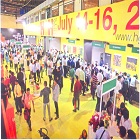
The three-day B2B trade show ‘HGH India 2015 kicked-off’ in Mumbai yesterday at the Bombay Exhibition Centre. More than 400 brands are showcasing innovations in home products to Indian home product retailers. 18,000 professional trade-visitors from all over India are expected to visit to get a glance of the comprehensive product range on offer.
Innovation in home products on offer
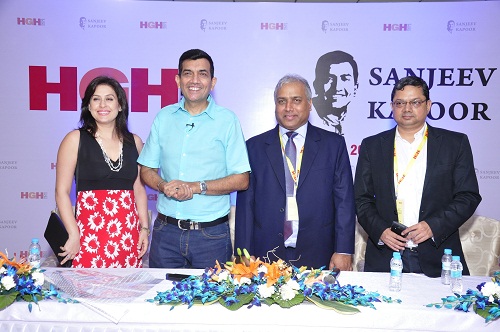
The exhibits, both Indian and international brands are focusing on increasingly differentiated needs and preferences of Indian households with their exclusive range. Elaborating on the concept, Arun Roongta, CEO of Texzone Information Services the organising company says, “The Indian home product market is growing and differentiating rapidly since Indian families now pay more attention to their homes and are quite sophisticated buyers.”
Leading brands like Spaces, Portico, Spread, Swayam, Esprit Home, Tom Taylor, Tangerine, Maspar Dicitex, G.M. Fabrics, R.R. Décor, G.M. Mills, Marshall, Marvel, Obsession, Borosil, Princeware,Lock-n-lock, Roxx, Noritake have launched their new collections at the show.
Popular Indian companies like Trident, Textrade, Welspun, Rug Republic, Dicitex to international brands like Rosetti, Jyupal, Designers Guild (UK), Zimmer & Rohde (Germany), are present at HGH India to introduce their latest offerings. Brands have come from Italy, Germany, Spain, Belgium, France, UK, Czech Republic, USA, Canada, Australia, China, Turkey, Hong Kong, UAE and other countries.
Exclusive platform for home products business
The event has four home product categories on display: home textiles, home decor, houseware, and gifts providing a comprehensive offering for professional buyers. Today, the majority of Indian home product retailers and institutional buyers offer comprehensive solutions to customers by integrating more products in their merchandising. HGH India as sourcing platform provides a one stop solution for retailers, who offer integrated housing solutions as well as specialty retailers, who concentrate on products like carpets or mattresses.
As a trend orientation for buyers and product developers, the HGH India Trend Team gives it's view of home product trends for the Indian market. It is unique for India and at par with global forecasts. Five themes of home decoration styles are explained and demonstrated with live products. Manufacturers, brands, retailers and other professionals in the home business can connect their products and style views to the aspirational Indian consumers through the defined five styles titled ‘Panchtatva’.
Just three editions old, HGH India has established itself as professional and result-oriented trade show with a clear focus on the Indian market. Almost 95 per cent of the 300 exhibiting brands and manufactures from India and 27 other countries were impressed with the easy access to high potential business partners and trade buyers. More than 15,500 serious trade visitors from 325 cities and towns across India visited HGH India 2014.

Trident, a leading player in home textile category launched a campaign for its new bath & home linen collection at HGH India, the annual trade show for home textiles, home décor, gifts & houseware at the Bombay Exhibition Centre in Mumbai. The brand has roped in actress Kriti Sanon as the face of its ‘The Affair to Remember’ campaign.
New campaign highlights exclusive features
Elaborating on the theme Rajneesh Bhatia, CEO, India Marketing, Trident Group said, “We all have our secret and special moments. The new campaign with Sanon captures this beautifully and we expect consumers to relate to it. High quality products launched in this personal space represent the comfort and style quotient every individual aspires for.”
The bath & home linen collection is a combination of contemporary designs, innovative constructions and luxurious fibre. Inspired by today’s fast paced culture, the new range emphasizes greatly on technological breakthroughs and hi–performance features. Matching the evolving lifestyles and growing awareness of consumer, the collection brings refreshing discoveries filled with floral and florid prints. The richness of the collection is enhanced with lavish embroidery to recreate the feel.
Talking about Kriti Sanon as the brand ambassador, Bhatia says, “We wanted a young and vibrant personality who people could associate to, who is still not big but slated to be very big star, because that is what we think about our brand too. Though we are not a big name today in this market but our range holds all the traits essential to be a big brand.”
Strengthening presence in India and beyond
Trident, offers a variety of terry towels and bed linen, for everyday and special occasions. These home textiles products are sold under various brands like: Trident Organica, Trident Indulgence, Trident Home Essentials, Trident Cuddlies, Trident Bath Buddy and Trident Play. New offerings are comforters, dohars, blankets, cushions which make the home linen portfolio complete. Chotta Bheem products launched for kids by Trident are also driving a lot of consumer interest.
Elaborating on being an international player, Bhatia says, “We have been in this trade for nearly 14 years. We thought of entering the domestic market many times but it could not happen. The reason was the market size, which was big but largely unorganised. If I ask you what size of towel you use, you won’t be able to give the answer to me. This is the sad part of this market as of now. It requires lots of educational marketing in the segment. Now we want to be the biggest to best, as our slogan says. And after catering to the international markets, we did a soft launch in HGH and tried entering the Indian market through major stores. But this year, we have changed the gears and we are going at a much faster pace.”
The company would focus on extending reach through online retail and hotels. Through online channels, it will be leading sales from the front and the second channel, it aims to go aggressive with is through hotels. For example, the brand will try and penetrate five star properties. And the third channel is distribution. “We are getting many queries and focussing on having a strong distribution network in next three months with 45 plus distributers. We may soon be available in all cities in the country. In terms of expansion and business, eastern and southern regions are not as important for us as north and west. So we would like to expand their first, majorly in Mumbai,” explains Bhatia.
The Ludhiana-based $1 billion Indian business conglomerate, is the largest terry towel and wheat straw-based paper manufacturer in the world. Trident’s customer base spans more than 75 countries and comprises of global brands like Ralph Lauren, Calvin Klein, JC Penney, IKEA, Target, Walmart, Macy's, Kohl's, Sears, Sam's Club and Burlington, to name a few. With export turnover accounts for about 50 per cent of total sales, the group has emerged one of the world’s largest integrated home textile manufacturers.
www.tridentindia.com
Premiere Vision in New York will take place on July 21 and 22. The show will add accessories, fabrics and textile design to its offering. There will be multiple yet edgy choice of products and a clearer spotlight on trends. Some 306 companies will be present with new collections. There will be exhibitors from Italy, France, Turkey, Portugal, Spain, Japan, South Korea, Great Britain, United States and more.
The varied collection will have collages, assemblages and mixes. The accessories section will have textile trims, buttons, labels, functional products, jewel components and furs. On the weavers’ side, knits, jacquards, lace and embroidery are some of what’s on offer for the fall/winter season, with particularly rich proposals for outerwear garments.
These latest collections are rounded out by a full package of fashion information: seminars, Première Vision colors, trends and product preview displays. As at each edition, Première Vision New York will invite top speakers to discuss issues of crucial importance to the world of fashion. Key industry leaders will take an in-depth look at the future of fashion and about anticipating a new fashion system. Participants will include a knit swatches specialist, an embroidery maker and a designer.
www.premierevision-newyork.com/
Spinning mills in Tamil Nadu have decided to cut down production. The reason is a decline in demand for synthetic yarn. Mills have decided to stop production on Saturdays and Sundays for a few weeks to not pile up stocks. Tamil Nadu has some 90 mills producing yarns. The state produces 40,000 tons of high count synthetic yarns such as polyester cotton yarn per month.
Due to the decline in demand these mills are incurring 10 to 15 per cent loss. India is the world's biggest exporter of cotton yarn. Tamil Nadu contributes 60 per cent of national production and is home to the bulk of India's mills, which employ 400,000 people. Tamil Nadu’s spinning mills account for nearly 47 per cent of the total spindle capacity in the country.
Mills in Tamil Nadu have also been suffering from a shortage of power along with rising labor cost. This makes competing in the global market difficult. Cotton, power and labor account for 90 to 92 per cent of mill costs. And mills in Tamil Nadu are hit on all three counts. Another problem they are facing is the unfavorable export-import tax structure.
The proposed free trade agreement between India and Canada, which aims to reduce or eliminate duties on a large number of products traded between the two nations, is likely to be concluded by March next year. Negotiations for the agreement were launched by both countries in November 2010 to further boost bilateral trade and investment.
The proposed pact seeks to open the services sector and facilitate investment. One obstacle to signing the FTA is India’s highly protected market and the entrenched positions of both sides on key sensitive issues. Canada wants a lot in terms of access for its goods in a highly protected market, but has relatively little to offer in return because tariffs are already relatively low. And Canada is reluctant to give the one thing India really wants – freer mobility of visitors and temporary service workers.
It remains to be seen if the agreements include an investor-state dispute settlement provision. India was previously opposed to the controversial provision. There are charges that the FTA will promote the rights of transnational corporations at the expense of the rights of local communities to make their own decisions about social, cultural, environmental and economic policy.
Textile Association (India) has revamped its website Textileassociationindia.org. This has been done after significant progress and expanding its reach with a complete new Advance Content Management System (CMS), with a special focus on TAI activities and mega events including press releases, quick links, updated information about Indian textile industry, textile dictionary, expert talks, e-Journal and much more.
From design to content, the entire website has been redesigned with several language translation options to make it more user-friendly and interactive. TAI has moved a step ahead to also enable advertising opportunities on website banners along with several informative wings which has been attracting visitor traffic of over 16,000 page views per month from India and abroad, which includes industry leaders, textile associations, cotton and textile traders, equipment manufacturers, experts and government officials.
Website is an effective tool for strengthening marketing base in India and abroad through advertisements to boot the business opportunities across the globe. The revamped website has been done in order to make it more dynamic and friendly so that it can be accessed with smartphones, I-phone, I-Pads, tablets and so on.
www.textileassociationindia.org



